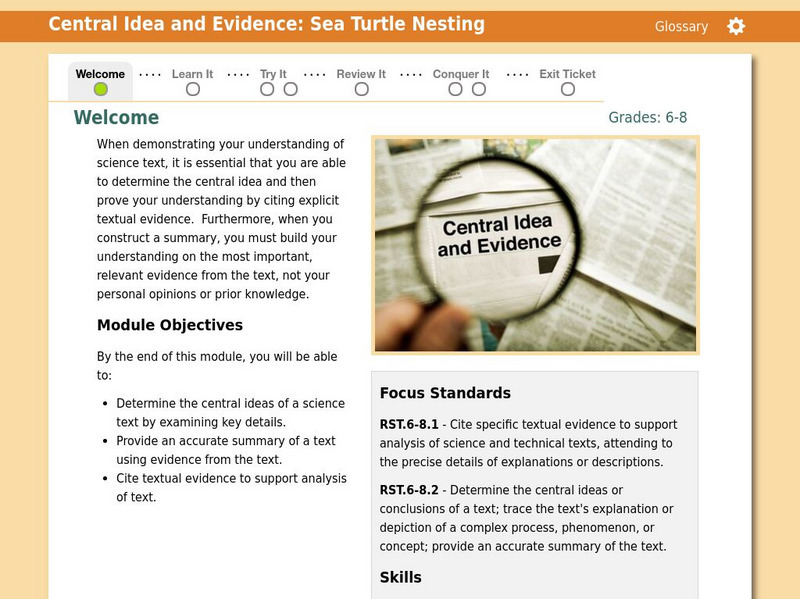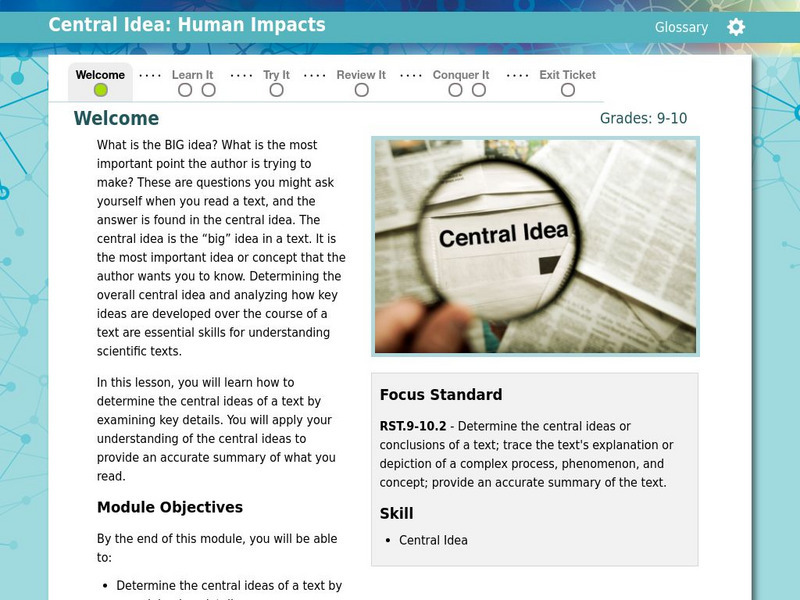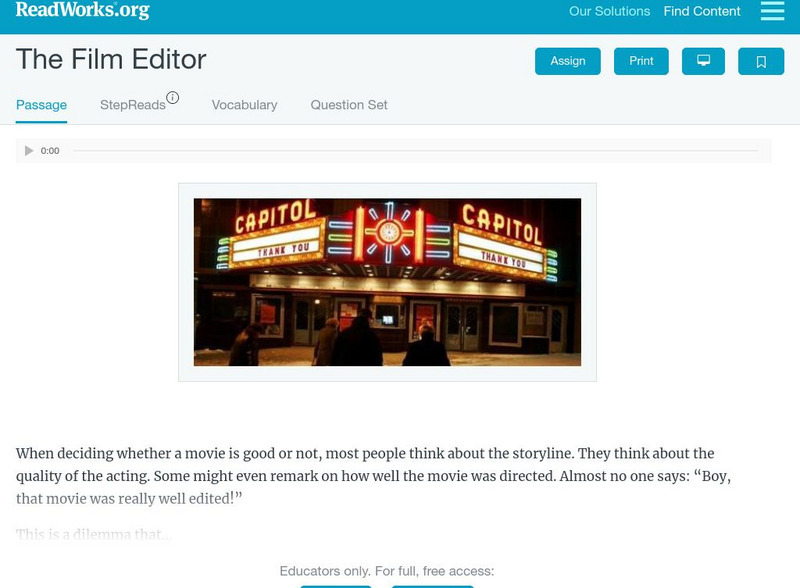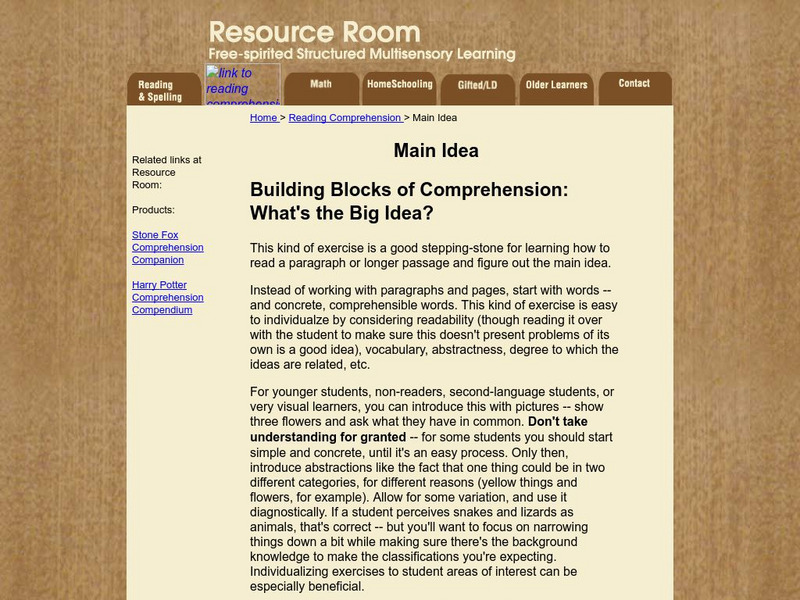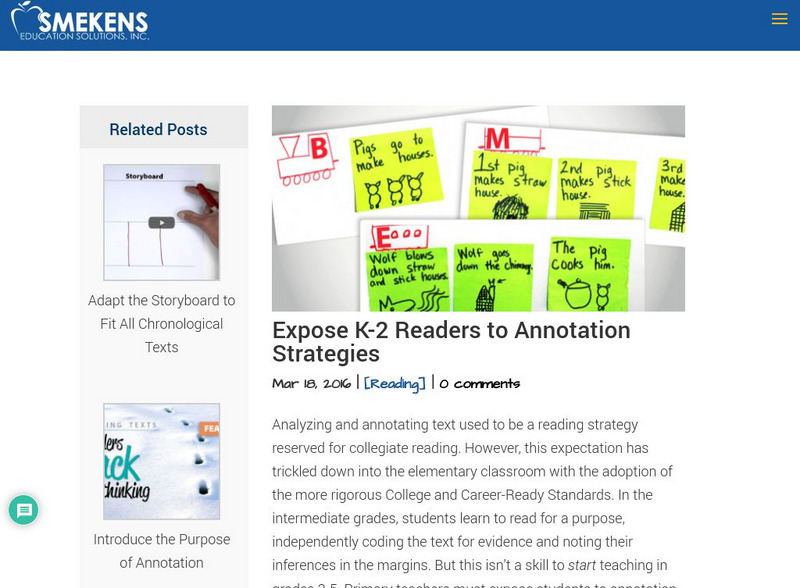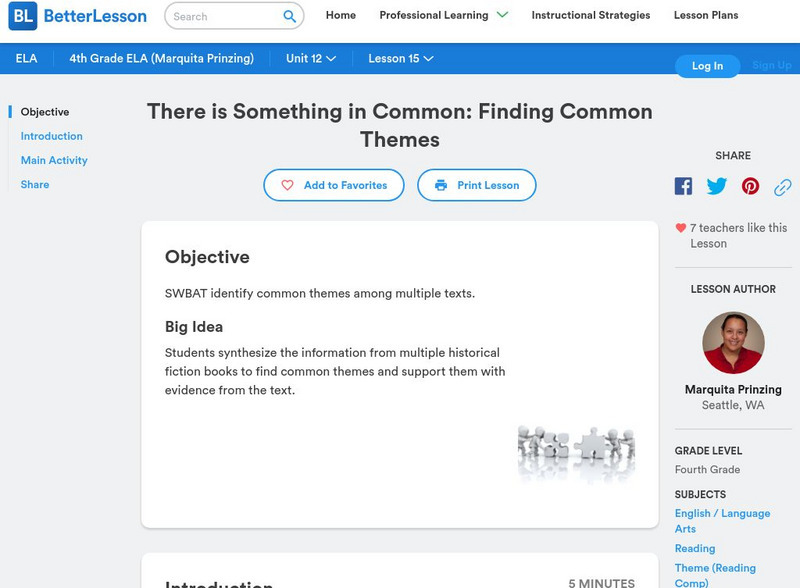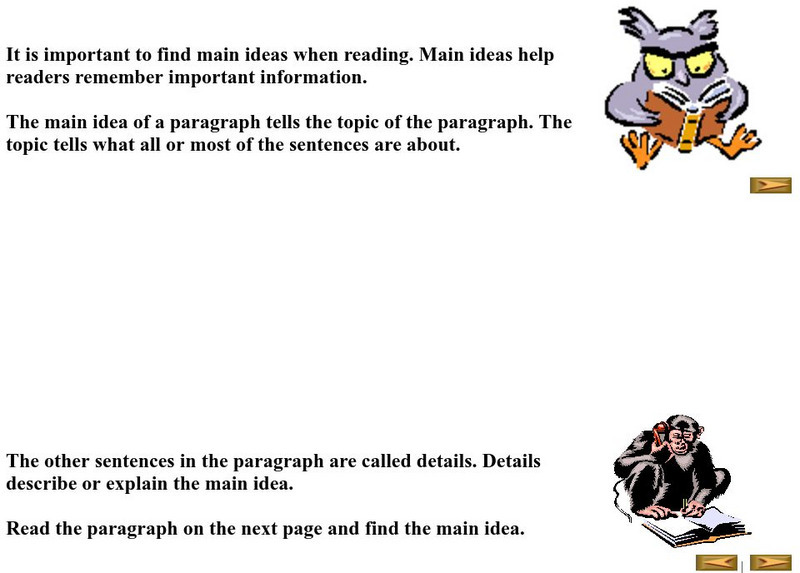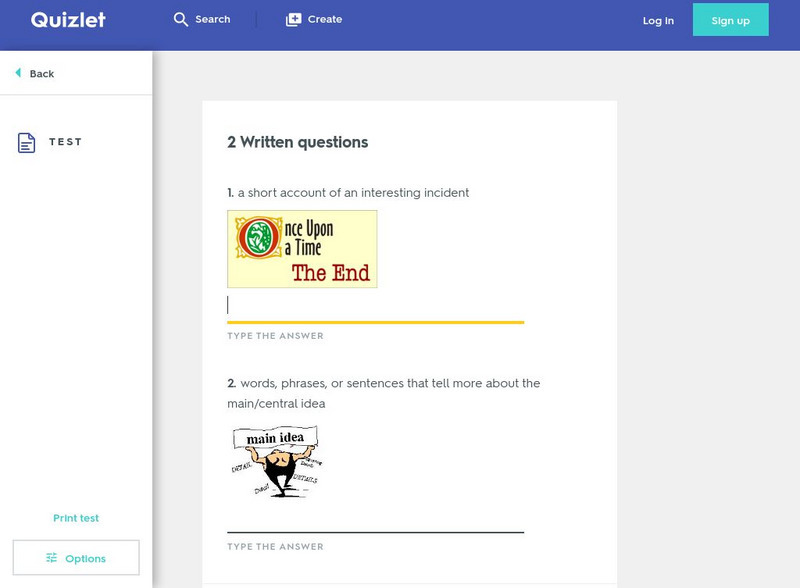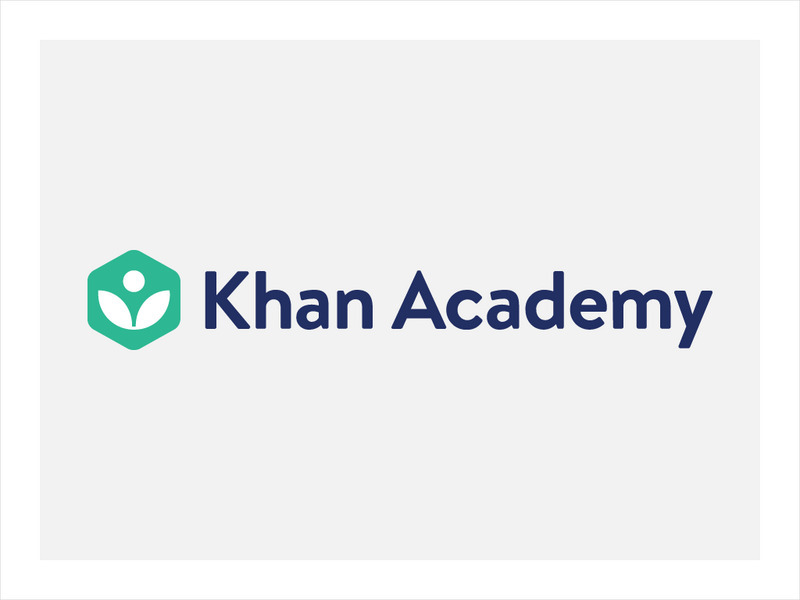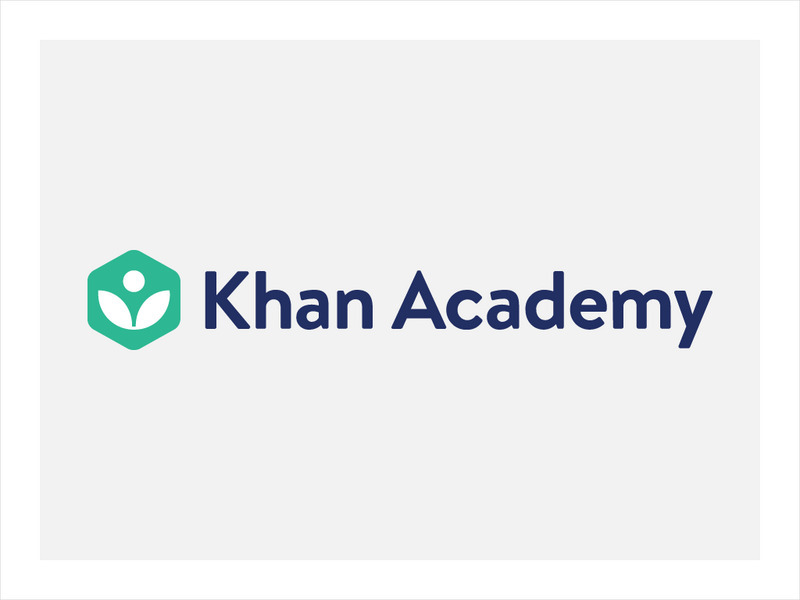Polk Brothers Foundation Center for Urban Education at DePaul University
De Paul University: Center for Urban Education: John's Bright Idea [Pdf]
"John's Bright Idea" is a one page, fictional, reading passage about a mother and children who help a poor boy to support his family. It is followed by constructed-response questions which require students to provide evidence from the...
Florida Center for Reading Research
Florida Center for Reading Research: Expository Text Structure: Summarizing [Pdf]
A lesson plan in which students read a text and record the main ideas and supporting details on a graphic organizer. Students then complete the organizer by writing a summary of the text. Materials are included.
Thinkport Education
Thinkport: Central Idea and Evidence: Sea Turtle Nesting
Students practice finding the central idea and summary of a nonfiction piece about sea turtle nesting.
Thinkport Education
Thinkport: Determine the Central Idea: Human Impacts
Students will learn how to identify the central idea of a text about human impacts by examining key details.
Wisc-Online
Wisc Online: Identifying the Main Idea
This resource defines main ideas and is an interactive way to assess a student's ability to correctly find main ideas from paragraphs.
Read Works
Read Works: Passages: The Process of Acting
[Free Registration/Login Required] Students read a nonfiction text about what it takes to be an actor and answer questions about comprehension, main idea, supporting details, vocabulary, transitions, and more. Links to a paired text and...
Other
Resource Room: What's the Big Idea?
This exercise can be used to help students develop understanding of main idea and supporting details. Students are given a list of words to analyze, decide the theme and write a common subject that defines the group.
Texas Education Agency
Texas Gateway: Summarize Informational/expository Text
[Accessible by TX Educators. Free Registration/Login Required] You will learn how to summarize main ideas, supporting details, and relationships among ideas within expository text.
Beacon Learning Center
Beacon Learning Center: Web Lesson: Did I Read It: Implicit vs Explicit Details
Follow Carson through a lesson in order to become a better reader of informational text. Learn the difference between implicit and explicit information. Includes multiple interactive assessments and reading activities.
E Reading Worksheets
E Reading Worksheets: Text Structure Worksheets
This site provides several assignments and graphic organizers related to identifying text structures. Analyzing the following types of text structures are provided: main idea and supporting details; cause and effect; chronological order;...
Other
Smekens Educational Solutions: Expose K 2 Readers to Annotation Strategies
This article discusses how to begin teaching students in K-2 to record their ideas about text using highlighters, colored pens, large graphic organizers, and sticky notes. Students can retell a story with a storyboard, use a web to find...
Smithsonian Institution
Smithsonian Learning Lab: Wwii on the Home Front: Civic Responsibility
Smithsonian Education presents a lesson covering the WWII's propaganda program which enforced the ideals of Civic Responsibility. Provides eight pages of poster examples, detailed background over the time period, and the goals of the...
University of South Florida
Fcat Express: Teaching Strategies (Reading) [Pdf]
Printable, fifty-five page PDF file of a staff development manual containing strategies for teaching reading. Includes chapters on vocabulary, main ideas and supporting details, author's purpose, chronological order, plot and conflict...
Better Lesson
Better Lesson: There Is Something in Common: Finding Common Themes
Students will synthesize information from multiple historical fiction books to find common themes and support them with evidence from the text. Working with a partner who has read a different book, they will share their theme from their...
Beacon Learning Center
Beacon Learning Center: Get the Idea
In this reading comprehension exercise, young readers will learn to identify main ideas in paragraphs. Includes multiple choice options with hints.
TES Global
Blendspace: What Is the Main Idea and Supporting Details?
A twelve-part learning module with links to videos, texts, and images that explore the idea of love to go along with William Shakespeare's Romeo and Juliet.
Quizlet
Quizlet: Types of Details: Test
This interactive quiz features six multiple-choice questions about types of details and their definitions.
Quizlet
Quizlet: Types of Details: Match
In this interactive game, students match the words having to do with types of details to their definitions.
Quizlet
Quizlet: Types of Details: Learn
In this interactive focusing on learning types of details, students type in the word to match the definition given.
Other
Ccss Literacy E Handbook: Informational Text: Use Details and Examples
A short explanation of how to use explicit details in an informational text to make inferences. Click on Model at the bottom right to see a model with examples.
Khan Academy
Khan Academy: Supporting Ideas Quick Guide
Supporting Ideas Questions: These questions ask you to identify the supporting ideas and specific details mentioned in a passage. What does the passage say? Perhaps the most basic task of the Praxis Core Reading Test is recognizing...
Texas Education Agency
Texas Gateway: Analyze Controlling Idea or Thesis, Purpose, and Textual Elements
Analyze the controlling idea and the specific purpose of the text, identifying the textual elements that support that purpose including the most important details. RI.9-10.2 central idea/summary [Unarchived version is accessible by TX...
Khan Academy
Khan Academy: Main Point Quick Guide
The first question in most Reading Comprehension sets will ask you to identify the statement that best expresses the central idea or the main point that the passage as a whole is designed to convey.
University of South Florida
Fcat Express: Selective Underlining Worksheet (Pdf) [Pdf]
Printable PDF file of a Selective Underlining Worksheet. Students underline the main idea and supporting details in three paragraphs. It is provided by a standardized test preparation site intended for fourth grade.
![De Paul University: Center for Urban Education: John's Bright Idea [Pdf] Unit Plan De Paul University: Center for Urban Education: John's Bright Idea [Pdf] Unit Plan](https://static.lp.lexp.cloud/images/attachment_defaults/resource/large/FPO-knovation.png)
![Florida Center for Reading Research: Expository Text Structure: Summarizing [Pdf] Lesson Plan Florida Center for Reading Research: Expository Text Structure: Summarizing [Pdf] Lesson Plan](https://content.lessonplanet.com/knovation/original/509106-80e78b7399a2808435954652f1b4d966.jpg?1661786965)
